Do-it-yourself perennial flower beds - we decorate a beautiful flower garden
To break a flower bed of perennials in the country, you do not need to get a higher education or be a certified specialist in landscape design.
What to plant - onions or perennial flowers?
Not everything in the garden should be for the stomach, you need to leave room for "beauty" - just for the soul. A flowerbed of continuous flowering of perennials is easy to decorate even the most nondescript area, giving it a unique charm. Roses, geraniums, carnations, poppies and asters will grow in the same place season after season, without requiring special attention.
The question that every novice gardener should understand is the choice of plants for a perennial flower garden. From practical experience, the first flower bed should be made small and planted with unpretentious flowers that grow well under the bright sun.
A flower bed is a bright element of the garden, so it makes no sense to break it in the far corner of the site or hide it under the shade of trees. The best solution for creating a perennial flower bed will be a place that is clearly visible from all sides.
Multi-level flower beds (with tall exhibits in the background and short ones in the front) are usually placed near the walls of a house, fence or hedge. Whereas in the center of the plot, a constantly flowering flower bed of perennials can either form all kinds of combinations of plants, or be decorated with only one species.

Flowerbed of perennials for beginners
Flower garden-puzzle of the most popular flowers - assemble it yourself!
- Tall representatives of the flora for the center of the composition:
Roses, astilbe, lilies, asters, clarikia, peonies, black cohosh, Hassler's cleoma, delphinium, ornamental onions, phloxes, gelenium, Ruselovsky's gooseberry, multi-leaved lupine, clematis, hosta, hydrangea, rudbeckia, liatris spiky, poppy, meadow bells, columnar ratibida , echinacea, daylily and many others.
- Medium-sized perennials for a modest addition:
Tulips, anemone, irises, fragrant rue, dyeing navel, aquilegia, beautiful small-flowered, mountain cornflower, hybrid catnip, magnificent dicentra, oak sage, gravel, yarrow ptarmica, geyhera, bergenia, narrow-leaved lavender, primula, fern, quadrangular evening primrose, etc.
- Ground cover plants for edging flower beds and filling gaps:
Byzantine chistets, acena, small periwinkle, creeping tenacious, Renard's geranium, obrieta, Carpathian bell, carnation-grass, lobularia, spring umbilical, waldsteinia, lungwort, small periwinkle, veronica and others.
Tall soloists are recommended to be planted separately, but it is better to plant small flowers in groups, several copies at once. At the same time, in a flower bed viewed from different angles, higher individuals should be planted closer to the center, and low ones along the edges.
Advice. So that bald spots do not gape in the flower bed and weeds do not grow, plant the plants as close to each other as possible, but not too crowded.
Do you want to achieve continuous flowering? Learn about the features of each flower, write down the flowering time on a piece of paper and make your own combination scheme of a beautiful club of perennials, in which some plants will bloom in early spring, others in the middle of summer, and still others will bloom until late autumn.
Of course, to think over the ideal design of a luxurious flower garden is a special task. But, fortunately, there are proven schemes for perennial flower beds.
Perennial flower beds - the best planting patterns
Several options for the location of plants in flower beds - schematic symbols with the names of perennials.
Scheme No. 1 "The most uncomplicated"
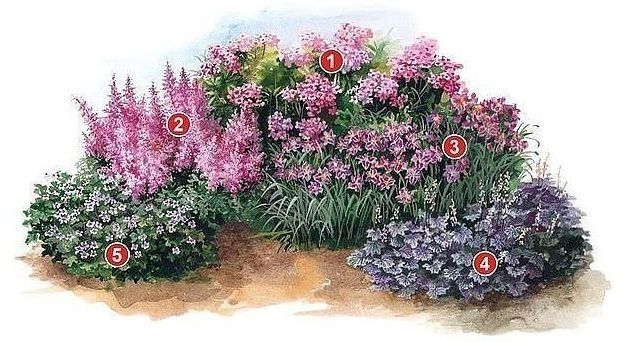
In this simple and attractive composition of long flowering, such unpretentious perennials were used as:
- panicled pink or purple phlox. The best time for planting is September or mid-March, grows well in well-drained, sandy soil, blooms from mid-July to autumn;
- pink astilba. Flowering of different varieties lasts, as a rule, from the end of June to mid-August, the plant is responsive to regular feeding and loosening;
- purple-silvery daylily. The plants are planted in the spring in a rich in organic matter and well-drained, loose loam with an optimal acidity of 6-6.5 pH;
- geyhera with leaves of silver gray and lavender shade. Prefers light soils without stagnant water, blooms from May to July;
- geranium splendid. It blooms luxuriantly from mid-summer to the end of the season, forming a lush bush with light purple flowers).
Scheme No. 2 "An example of a flower bed of perennials that bloom in the first year"

- stock-rose "Pleniflora" with dense double corollas of yellow, salmon-pink and red-purple flowers (“Pleniflora” is not a rose, but a giant mallow that blooms profusely in sunny and moist areas of the garden from mid-summer to the first cold weather);
- ten-petalled sunflower(a very valuable variety that blooms from mid-August to mid-October, grows well and has healing properties);
- Icelandic poppy(Ideal for an ever-flowering perennial bed due to continuous flowering from May until autumn);
- Hypericum "Hidcote"("An odorless" species of St. John's wort pleases with yellow inflorescences in a flower bed from June to September);
- lobelia cardinalis(a plant with a beautiful leaf plate, blood-red flowers adorn from July to October);
- catnip "Nepeta faassenii"(blooms for a long time with lavender-like flowers, starting in May);
- bluebell "Campanula poscharskyana"(the crystal ringing of these delicate and fragile lilac-blue flowers can be heard from June to September);
- katananche "Blue Cupid"(inflorescences-baskets of a muted sky shade can be observed all summer long);
- perennial gravel(in the composition of a long-flowering flower bed, the herbaceous plant of the Feuerbal variety does not solo, but rather complements the flower garden from May to July);
- sedum "Matrona"(strong bush with beautiful flowers remains decorative until the first snowfall);
- Heuchera "Miracle"(a spectacular bush with an unusual shade of foliage is decorated with pink flowers from June to mid-summer).
Scheme No. 3 "Pink-purple beautiful flower bed"
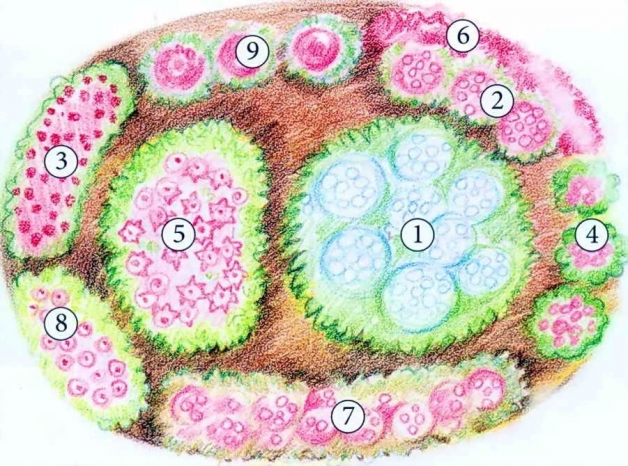
- mountaineer changeable with bluish-green delicate leaves, this large perennial shrub blooms with a "white cloud" in late June and remains in bloom until the end of summer;
- monarda hybrid creates a romantic mood in the country when, during flowering, its pink flowers begin to exude a divine aroma;
- astrantia "Claret", its small, numerous flowers-umbrellas of rich red-wine color, blooming in mid-summer, look luxurious against the background of dark purple leaves;
- Bergenia(saxifrage tolstolitsnaya) pleases the eye from May to July with paniculate-thyroid inflorescences on long pedicels .;
- Phlox "Dragon" with its smoky silver-violet petals, it looks especially attractive in the composition of a sunny flower bed;
- Heuchera "Obsidian" hybrid with dark purple-violet, almost black leaves blooms in June;
- geranium "Compactum" grows very luxuriantly, adding blood-red tones to the flower garden;
- Sedum telephium or hare cabbage, varieties "Matrona" blooms in mid-summer with pale pink inflorescences;
- bell "Loddon Anna" with pale purple broad-pyramidal inflorescences fill the garden with a delicate aroma from July to September.

The material was prepared for the site www.site
Creating a flower bed from perennials: land preparation and planting
Having decided on the ingredients for the flower bed, it's time to start preparing the soil for the flower garden. This is the most uncreative and time-consuming business in creating a perennial flower bed. But, at the same time, the most necessary thing, because well-prepared land is the foundation of a future flower bed.
You need to prepare the ground after you draw a sketch of the future flower garden. It is necessary to choose plants not only according to the timing of flowering, but also according to their similar requirements for light, moisture and soil - this will greatly facilitate the care of the flower bed. (For example, in the shade and semi-shady areas in dry areas with fertile and loose soil, they grow well: geyher and Goryanka, lilies of the valley and cuffs, primroses and phloxes, irises and geraniums, periwinkles and anemones).
How to make a beautiful flower bed of perennials?
Start by removing the old sod with a shovel. Remove all weeds with roots and reanimate the soil by diluting clay soil with sand, and light soil with clay soil or betonite. Then add compost (this will make the soil more fertile) and loosen the soil as deep as possible with a pitchfork, mixing clay, sand and compost. Add the necessary fertilizers and start planting seedlings.
Please note that in a flower bed of any scheme, approximately 1 sq. M is planted:
- 10 pieces of ground cover plants;
- 7 pieces undersized;
- 5 pieces of medium height;
- and 1-3 tall plants.
Now you know how to arrange a flower bed of perennials.
Flowerbeds of classical forms are less and less common in landscape design. In the landscape gardens of our days, island flower beds with plant species that are asymmetrical in height and planting, arranged on lawns and lawns, are more appropriate. No less popular are multi-level vertical plantings. Raised flower beds planted in flower beds of original forms, mini-flower beds in old stumps and cascades of rectangular stands bordered by broken bricks also look interesting.
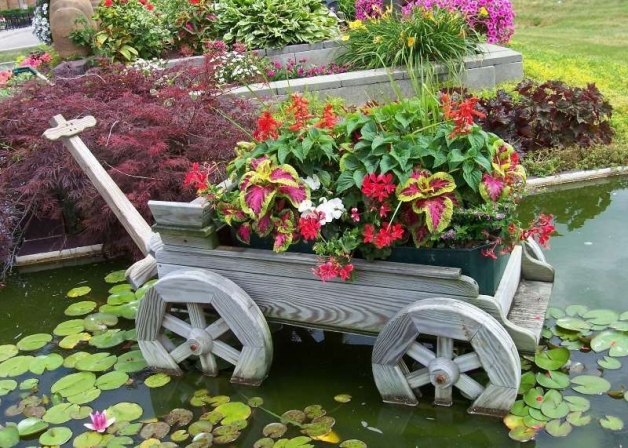
Tip: If possible, the shape of the flower bed should be combined with the shape of the nearest building, such as a gazebo or porch.
Round flower bed of perennials
If we talk about the simplest method of flower decoration of the site, then this is, of course, a round flower bed of perennials, which is very easy to do with your own hands. It is very important to choose the right size. Since on a large area a small flower garden will look ridiculous, and a flower bed that is too voluminous within a limited space will be poorly visible.
Important! When decorating a garden with a perennial flower bed (for a harmonious combination of all elements), be sure to take into account the surrounding situation.
The place for the flower bed should be cleared of weeds, debris and stones. Break large clods of earth, dig the earth and level it with a rake.
To accurately draw a circle, you need to take a peg, drive it into the center of the future flower bed and tie a rope to it, at the other end of which there will be a peg. They need to draw the correct circle of the required size.
The scheme of a round flower bed of perennials and annuals do it yourself

 with large white flowers, compactly collected in inflorescences;
with large white flowers, compactly collected in inflorescences;
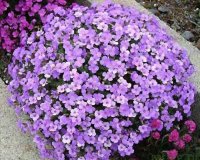 , often used to decorate borders;
, often used to decorate borders;
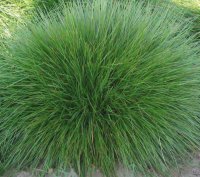 with characteristically narrow, linearly elongated leaves, which, intertwined, form a continuous bright green carpet;
with characteristically narrow, linearly elongated leaves, which, intertwined, form a continuous bright green carpet;
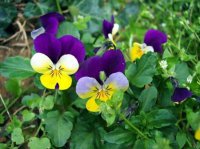 4. (Viola) pansies, specifically the variety "V. t. Maxima "- tricolor violet, blooming all summer; Achyranthes verschaffelti 8. Achyranthes verschaffelti, whose fleshy leaves are most often used by landscape designers to decorate patterned flower beds.
4. (Viola) pansies, specifically the variety "V. t. Maxima "- tricolor violet, blooming all summer; Achyranthes verschaffelti 8. Achyranthes verschaffelti, whose fleshy leaves are most often used by landscape designers to decorate patterned flower beds.
- When forming a flower bed of perennial flowers, do not be afraid to choose interesting shapes for it.
- Tall and short perennials are best suited for growing in rows.
- Choose such a plant that your flower bed will bloom magnificently, in waves from spring to late autumn.
- Be sure to include a couple of plants with a beautiful multi-colored leaf in your flower bed design.
- Plant 2-3 plants of the same variety at once so that when they grow, they create a visual effect of movement.
- Play with contrasts, mix colors, textures and shapes of plants.
If you didn’t like the flowering of some plants in a flower bed, improve it, remove what disappointed you and plant new flowers in the vacant place. The soil of your garden is not the place to be littered with bad (not the best).
Perennial flower beds: the most successful photos
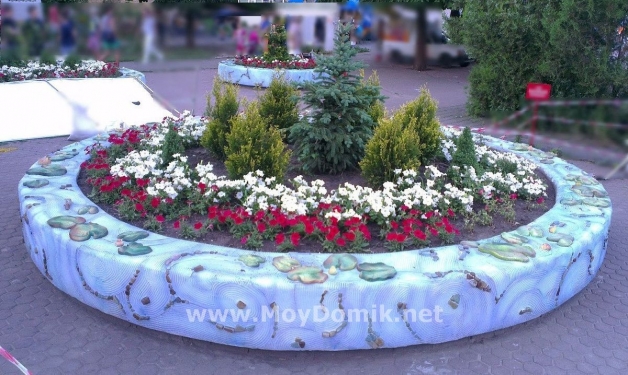
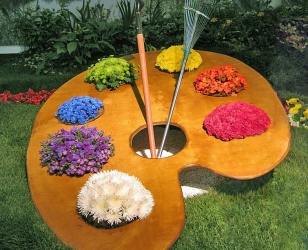
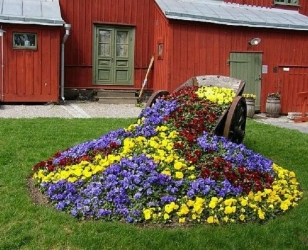
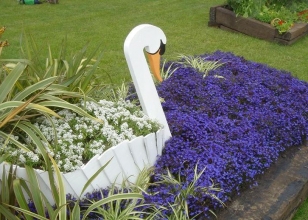
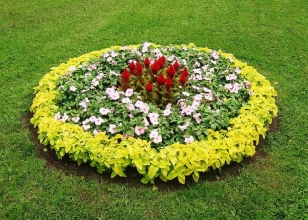
 Masonry mortars for brick kilns
Masonry mortars for brick kilns Why do the windows fog up in the apartment
Why do the windows fog up in the apartment Construction and schemes of brick ovens
Construction and schemes of brick ovens How to lay paving slabs: tips and tricks
How to lay paving slabs: tips and tricks How to drill bathroom tiles
How to drill bathroom tiles Monolithic slab on coarse soil
Monolithic slab on coarse soil Which electric heater is economical
Which electric heater is economical